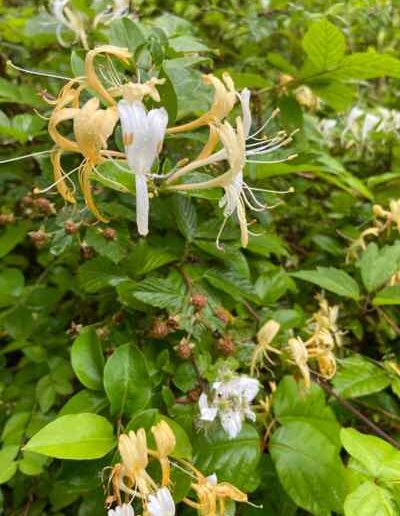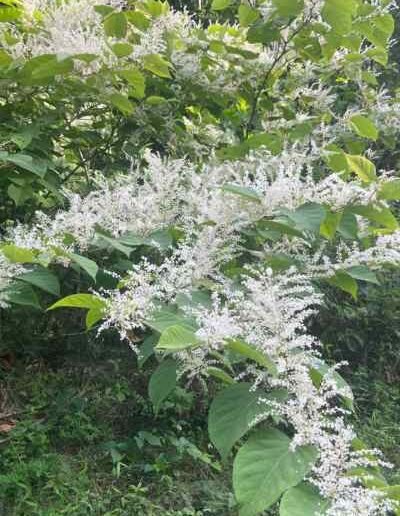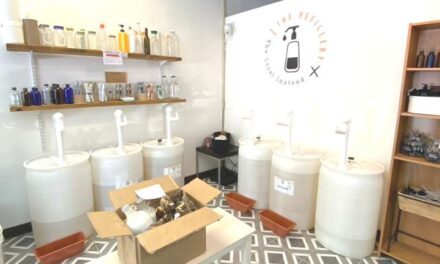Invasive species are all around us, and learning more about them can actually help the planet.
Have you ever noticed trees that look like they are being strangled, or observed plants that seem to grow everywhere? What about those strange insects that seem to infest your local landscape? When you fish, do you notice Zebra Mussels, Asian Carp, or other invasive freshwater or marine organisms?
Invasive species have hitchhiked to the United States from other places around the world. Many invasive species have no natural predators in the United States to control their populations, so their numbers rapidly grow over time. Invasive plants and insects disrupt our biodiverse ecological system by spreading en masse and outcompeting native species.
According to US Fish and Wildlife Services, “Invasive species are a primary cause of global biodiversity loss. They threaten nearly half of the imperiled species in the United States and have contributed to more than 40 percent of the current listings under the Endangered Species Act. In the United States, invasive species cause an estimated $123 billion dollars in damage and costs every year to things like agriculture and public health, but also sport fishing, hydropower facilities, municipal water supplies, and the aquaculture industry!”
Pesky Plants
Although invasive plants may seem pretty, they can be anything but. Their buds may be fragrant (such as Japanese honeysuckle), tasty (like garlic mustard) or highly poisonous (such as giant hogweed, which can cause skin sensitivity and burn flesh). As invasive plants grow, they continually compete for space, spreading seeds and roots and reducing or eliminating our native plants. Many invasive plants become so unruly they strangle trees, clog waterways, destroy crops, introduce disease, and overrun yards and parks.
Other invasive plants to look for near you: Oriental bittersweet, Japanese knotweed, purple loosestrife, aquatic invasives, and the Tree of Heaven.
Invading Insects
But invasive plants aren’t the only ones taking over the United States. Most of these pesky little buggers originated from other parts of the globe, and have found themselves a home in the US. Unfortunately, their populations are able to rapidly increase because most have no natural predators. You may recognize some of these insects in backyard gardens, forests, parks, favorite picnicking spots, and wetlands.
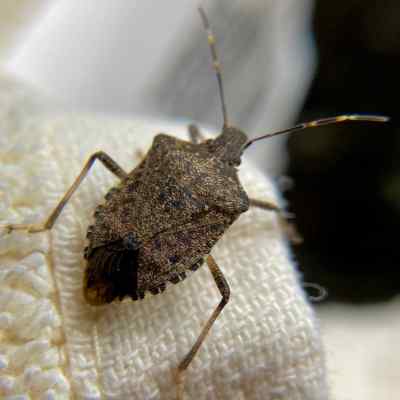
Brown marmorated stink bugs look a little prehistoric, and were first noticed in the late 1980s in Pennsylvania. They damage crops and fruit trees, invade your home looking for warmth in the winter, and secrete a terrible smell when threatened. According to the EPA: “From May through August, adult females lay clusters of 20-30 light green or yellow, elliptical-shaped eggs on the undersides of leaves. They usually produce one or two generations per year in cooler climates. Still, they can lay up to five generations yearly in warmer temperatures.”
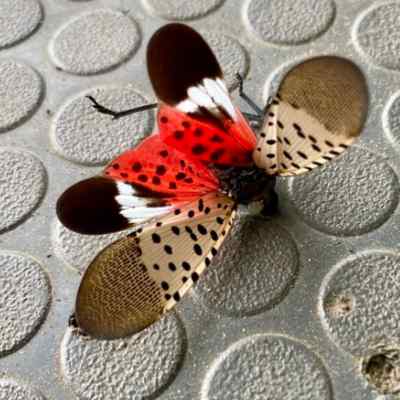
The spotted lanternfly (SLF) has become a real nuisance. Initially found in the mid-Atlantic, this invasive bug is spreading everywhere and has no natural US predator. Lanternflies may look pretty, but they’re disastrous to vineyards and orchards, chewing grape vines and decimating fruit trees. Their sticky honeydew residue can be found on our clothing, vegetation, and tree bark. EntomologyToday notes that the “SLF has a host range that incorporates over 70 host plant species. SLF can deposit up to almost 200 egg masses on a single host. Still, it need not be a plant: the lanternflies are happy to place egg masses on stones, fences, and other construction material, which makes them a great hitchhiking species.”
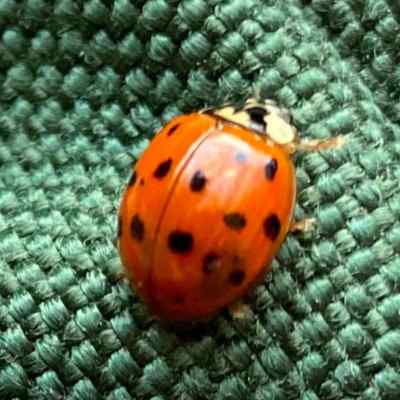
The Asian Lady Beetle was introduced to our country in the late 1970s to biologically control aphids and pests in pecan, apple, and agricultural fields. Like the stinkbug, orange ladybugs leave a smelly secretion trail behind. They like to congregate in warm, sunny areas and find their way into attics, walls, and small crevices. The Asian Lady Beetle will bite and can cause skin irritation.
How We Can Fight Back
You can help eliminate non-native species in your area by:
- Volunteering at your local conservation area to learn more and engaging in community action to remove them.
- Planting native plants in your yard. Many native plants can be purchased online or through your local community garden and state park system.
- Utilizing your citizen scientist skills to identify and record areas where invasive plants, insects, and aquatics are thriving. There are many apps where you can report invasive growth such as iMAPInvasives, Early Detection and Distribution Mapping System (EDDMapS), and Wildspotter.org. Data collected helps state agencies and organizations make conservation-based decisions and create management plans.
- Cleaning, wiping, or brushing off clothing, outdoor recreation equipment, and pets after being outside. This will prevent seeds or tiny insects from finding purchase.
- Refusing to release your unwanted pet goldfish, reptiles, amphibians or aquarium contents into the wild. If you need to rehome your pet, look for shelters, zoos or sanctuaries, or other rescues who are willing to care for your pet.
The National Wildlife Federation website provides information about invasive species and how they affect biodiversity, climate change, farming, infrastructure, aquatics, and forest health. Through prevention and management, we can reduce invasives in our local areas and help native species thrive.

Written by Yvonne Dwyer
Master Naturalist and OPL Content Contributor
“It is truly an honor for me to be a contributor to One Planet Life. By sharing my experiences and lifetime of learning, I hope to inspire conservation, sustainability, stewardship, and awareness of enjoying the natural wonders of the world for the wellbeing of people and the planet.”


